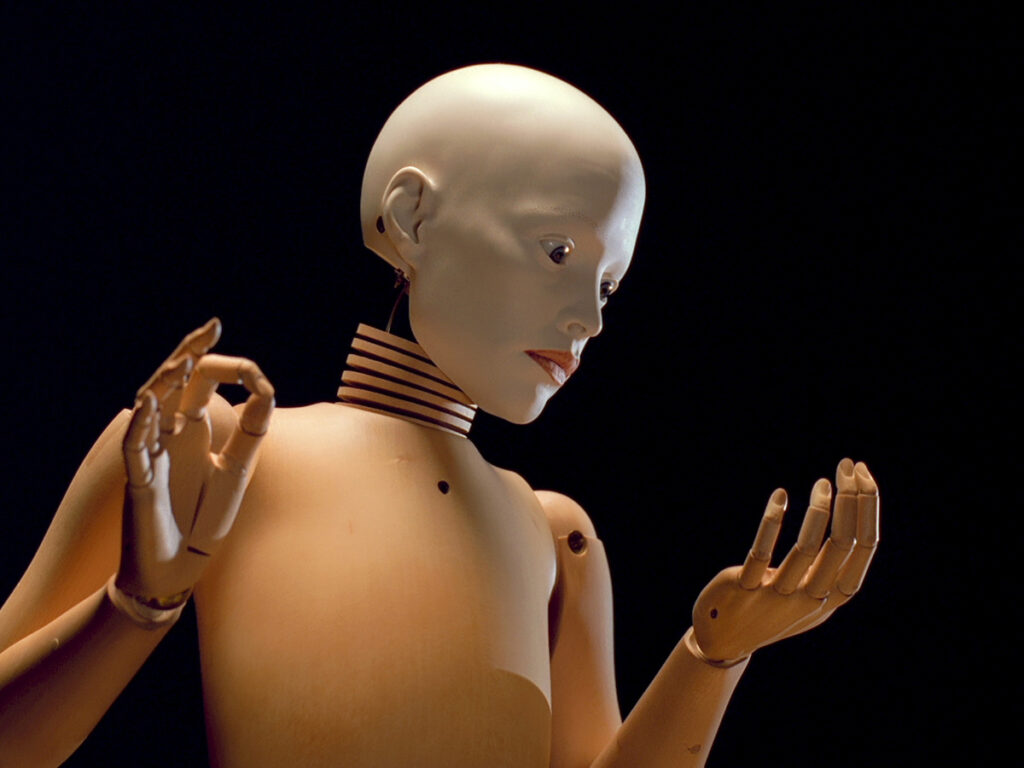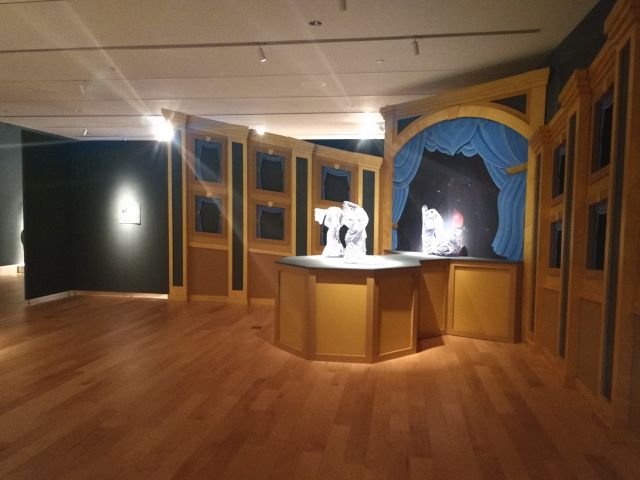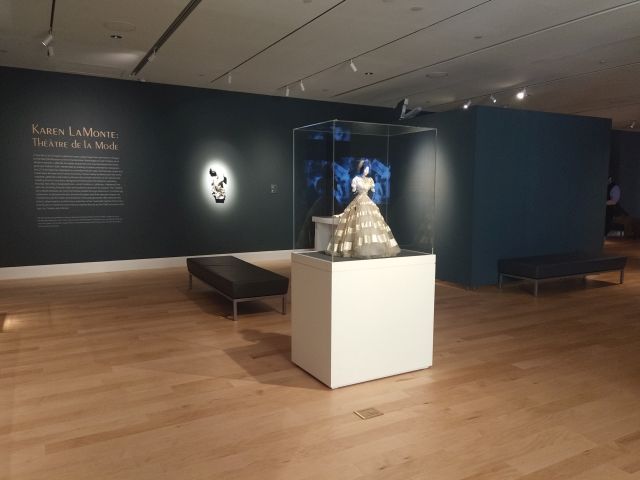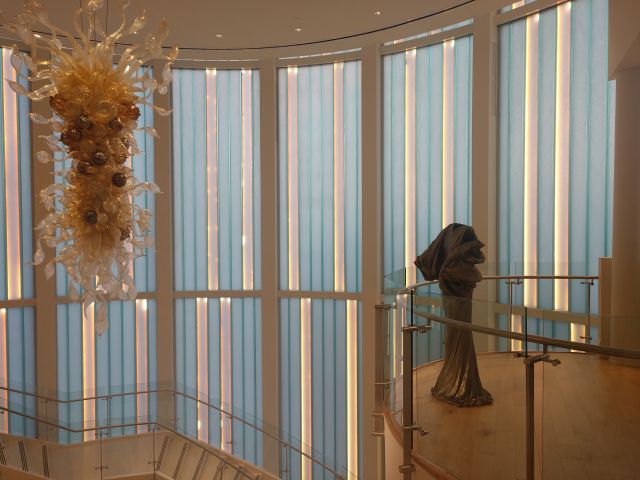In August I took a brief pause from exhibition work to make time for my assistantship training with the Cohen Career Center. September has been picking right back up though, so let’s take a look at what’s been happening at the Barry Art Museum.

Silent stop-frame animation. 2 minutes.
Last week we had a productive meeting with Elizabeth King, one of the artists featured in the show. Our objective in this meeting was to identify potential works from King’s oeuvre for the exhibition. Essentially we went through our tentative checklist one object at a time and discussed any logistical concerns regarding lighting, exhibit furniture, and object placement. We also made a list of our top choices to help narrow down the selection to something manageable. It was a great opportunity to get King’s feedback and get a better sense of how to approach the installation while also being mindful of everyone’s time, commitments, and well-being. I really liked the collaborative approach to the conversation, with artist and museum staff exchanging ideas on how to best display the work.

The conversation also reminded me how much my curatorial practice has changed over the last decade, as admittedly I haven’t always approached this work with such an openly collaborative mindset. When I was first starting out in my museum career I felt the need to assert my authority as a curator, both in terms of scholarship and installation aesthetics. In hindsight it’s understandable because I was new to the field and felt the need to make an impression, but the older I’ve gotten, the more I’ve come to appreciate the benefit of collaborating with artists and other museum staff on installations, of incorporating their ideas and suggestions rather than asserting my vision as the definitive one. After all, I can’t think of every solution to every question, and other people will bring in perspectives and ideas that are better than what I could have come up with alone. Exhibitions are already collaborative efforts as it is, requiring the expertise and experience of numerous people beyond the curator, so leaning into that helps make the overall process more enriching, both for myself and hopefully for the audiences who visit.
We’ve also been doing some important logistical work on the back end of the show, from reorganizing files in the drive to planning out schedules for newsletter texts. The museum’s website has also been updated with more information about the exhibition, and we’ve been determining the availability for potential speakers for educational programming. On my end, I’ve started planning out exhibit texts in terms of labels and overall introduction, both through assessing which objects will get longer text labels, and which stories they should emphasize.

I also traveled down to the museum to visit a different exhibition, Karen LaMonte: Théâtre de la Mode. A prominent contemporary artist working in glass and other materials, LaMonte creates cast sculptures of women’s dresses and related forms. Taking inspiration from classical Greek drapery and other historical fashion genres, LaMonte’s dresses exist as autonomous entities while simultaneously referencing the bodies needed to animate them. Rather than drape her works over mannequins, she uses actual women as models, incorporating their imperfections and idiosyncrasies into the work. Simultaneously present and absent, the women who model these empty dresses turn the pieces into feminist commentary on embodiment through their visible invisibility.
Aside from getting a chance to see some beautiful pieces and admire the work of the Barry Art Museum staff, I wanted to see the gallery in person, as this will be the same space where Motion/Emotion is staged. I’ve been to the gallery before, but I wanted to see the new paint color, as we’ll be keeping this same hue for our show. Ranging from a greenish-gray to a dark navy depending on the lighting, this rich gray color will be a fine backdrop to the works we’ll be showing. Given that most of the museums I’ve worked at were established decades before I was even born, I’ve never worked with such a contemporary gallery space before in terms of lighting and wall condition (while I was technically a co-curator for the inaugural show at Shelburne’s Pizzagalli Center, that installation took place without me because I’d already moved to New Mexico). Given how recent the construction for this gallery is, I’m excited to see how the exhibition will turn out.
Things will only continue to get busier as the fall progresses, but with a little planning my work schedule will remain manageable. In the meantime, things continue to come together for what should hopefully be an engaging installation.



